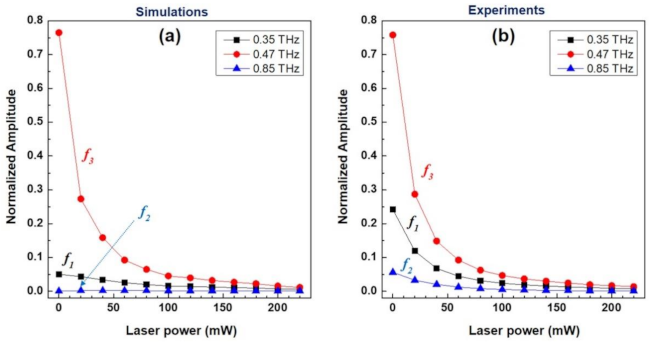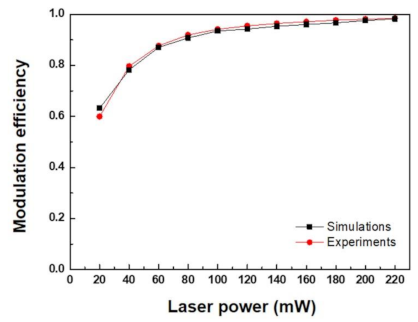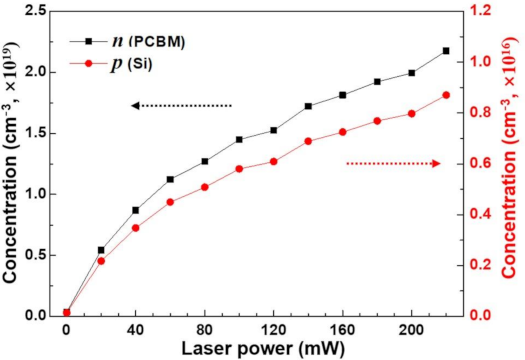Metal-Organic Hybrid Metamaterials for Spectral-Band Selective Active Terahertz Modulators
Abstract
:1. Introduction
2. Methods
3. Results and Discussion
4. Conclusions
Author Contributions
Funding
Institutional Review Board Statement
Informed Consent Statement
Data Availability Statement
Conflicts of Interest
References
- Mittleman, D.M.; Gupta, M.; Neelamani, R.; Baraniuk, R.M.; Rudd, J.V.; Koch, M. Recent advances in terahertz imaging. Appl. Phys. B 1999, 68, 1085–1094. [Google Scholar] [CrossRef]
- Tonouchi, M. Cutting-edge terahertz technology. Nat. Photonics 2007, 1, 97–105. [Google Scholar] [CrossRef]
- Siegel, P.H. Terahertz technology. IEEE Trans. Microw. Theory Tech. 2002, 50, 910–925. [Google Scholar] [CrossRef]
- Ferguson, B.; Zhang, X.C. Materials for terahertz science and technology. Nat. Mater. 2002, 1, 26–33. [Google Scholar] [CrossRef]
- Lee, Y.S. Principles of Terahertz Science and Technology; Springer: New York, NY, USA, 2009. [Google Scholar]
- Chen, H.T.; Padilla, W.J.; Zide, J.M.O.; Gossard, A.C.; Tayler, A.J.; Averitt, R.D. Active terahertz metamaterial devices. Nature 2006, 444, 597–600. [Google Scholar] [CrossRef] [Green Version]
- Lee, S.H.; Choi, M.; Kim, T.T.; Lee, S.; Liu, M.; Yin, X.; Choi, H.K.; Lee, S.S.; Choi, C.G.; Choi, S.Y.; et al. Switching terahertz waves with gate-controlled active graphene metamaterials. Nat. Mater. 2012, 2, 936–941. [Google Scholar] [CrossRef] [Green Version]
- Hilton, D.J.; Prasankumar, R.P.; Fourmaux, S.; Cavalleri, A.; Brassard, D.; El Khakani, M.A.; Kieffer, J.C.; Taylor, A.J.; Averitt, R.D. Enhanced photosusceptibility near Tc for the light-induced insulator-to-metal phase transition in vanadium dioxide. Phys. Rev. Lett. 2007, 99, 226401. [Google Scholar] [CrossRef] [Green Version]
- Seo, M.; Kyoung, J.; Park, H.; Koo, S.; Kim, H.; Bernien, H.; Kim, B.J.; Choe, J.H.; Ahn, Y.H.; Kim, H.T.; et al. Active terahertz nanoantennas based on VO2 phase transition. Nano Lett. 2010, 10, 2064–2068. [Google Scholar] [CrossRef] [Green Version]
- Sensale-Rodriguez, B.; Yan, R.; Kelly, M.M.; Fang, T.; Tahy, K.; Hwang, W.S.; Jena, D.; Liu, L.; Xing, H.G. Broadband graphene terahertz modulators enabled by intraband transitions. Nat. Commun. 2012, 3, 780. [Google Scholar] [CrossRef]
- Wu, X.; Pan, X.; Quan, B.; Wang, L. Optical modulation of terahertz behavior in silicon with structured surfaces. Appl. Phys. Lett. 2013, 103, 121112. [Google Scholar] [CrossRef]
- Yoo, H.K.; Kang, C.; Yoon, Y.W.; Lee, H.J.; Lee, J.W.; Kee, C.S. Organic conjugated material-based broadband terahertz wave modulators. Appl. Phys. Lett. 2011, 99, 061108. [Google Scholar]
- Yoo, H.K.; Yoon, Y.W.; Lee, K.; Kang, C.; Kee, C.S.; Hwang, I.W.; Lee, J.W. Highly efficient terahertz wave modulators by photo-excitation of organics/silicon bilayers. Appl. Phys. Lett. 2014, 105, 011115. [Google Scholar] [CrossRef]
- Yoo, H.K.; Lee, H.J.; Lee, K.J.; Kang, C.; Kee, C.S.; Hwang, I.W.; Lee, J.W. Conditions for optimal efficiency of PCBM-based terahertz modulators. AIP Adv. 2017, 7, 105008. [Google Scholar] [CrossRef] [Green Version]
- He, T.; Zhang, B.; Shen, J.; Zang, M.; Chen, T.; Hu, Y.; Hou, Y. High-efficiency THz modulator based on phthalocyanine-compound organic films. Appl. Phys. Lett. 2015, 106, 053303. [Google Scholar] [CrossRef]
- Zhong, L.; Zhang, B.; He, T.; Lv, L.; Hou, Y.; Shen, J. Conjugated polymer based active electric-controlled terahertz device. Appl. Phys. Lett. 2016, 108, 103301. [Google Scholar] [CrossRef]
- Lee, K.S.; Kang, R.; Son, B.; Kim, D.Y.; Yu, N.E.; Ko, D.K. All-optical THz wave switching based on CH3NH3PbI3 perovskites. Sci. Rep. 2016, 6, 37912. [Google Scholar] [CrossRef]
- Matsui, T.; Mori, H.; Inose, Y.; Kuromiya, S.; Takano, K.; Nakajima, M.; Hangyo, M. Efficient optical terahertz-transmission modulation in solution-processable organic semiconductor thin films on silicon substrate. Jpn. J. Appl. Phys. 2016, 55, 03DC12. [Google Scholar] [CrossRef]
- Liu, M.; Hwang, H.Y.; Tao, H.; Strikwerda, A.C.; Fan, K.; Keiser, G.R.; Sternbach, A.J.; West, K.G.; Kittiwatanakul, S.; Lu, J.; et al. Terahertz-field-induced insulator-to-metal transition in vanadium dioxide metamaterial. Nature 2012, 487, 345–348. [Google Scholar] [CrossRef] [PubMed]
- Chen, Z.C.; Hong, M.H.; Lim, C.S.; Han, N.R.; Shi, L.P.; Chong, T.C. Parallel laser microfabrication of large-area asymmetric split ring resonator metamaterials and its structural tuning for terahertz resonance. Appl. Phys. Lett. 2010, 96, 181101. [Google Scholar] [CrossRef]
- Song, M.S.; Hwang, I.W.; Lee, C.L.; Kang, C.; Kee, C.S.; Park, S.J.; Ahn, Y.H.; Park, D.J.; Lee, J.W. Effects of organic thin films on local resonance of metamaterials under photoexcitation. Curr. Opt. Photon. 2017, 1, 372–377. [Google Scholar]
- Lee, J.W. Terahertz wave modulation in PCBM-deposited metallic slit arrays. Appl. Sci. Converg. Technol. 2019, 28, 5–8. [Google Scholar] [CrossRef] [Green Version]
- Ji, H.; Zhang, B.; Wang, W.; Lv, L.; Shen, J. Ultraviolet light-induced terahertz modulation of an indium oxide film. Opt. Express 2018, 26, 7204–7210. [Google Scholar] [CrossRef] [PubMed]
- Matsui, T.; Takagi, R.; Takano, K.; Hangyo, M. Mechanism of optical terahertz-transmission modulation in an organic/inorganic semiconductor interface and its application to active metamaterials. Opt. Lett. 2013, 38, 4632–4635. [Google Scholar] [CrossRef] [PubMed]
- Chen, X.; Ghosh, S.; Xu, Q.; Ouyang, C.; Li, Y.; Zhang, X.; Tian, Z.; Gu, J.; Liu, L.; Azad, A.K.; et al. Active control of polarization-dependent near-field coupling in hybrid metasurfaces. Appl. Phys. Lett. 2018, 113, 061111. [Google Scholar] [CrossRef]
- Park, S.J.; Yoon, A.N.; Ahn, Y.H. Dielectric constant measurements of thin films and liquids using terahertz metamaterials. RSC Adv. 2016, 6, 69381–69386. [Google Scholar] [CrossRef]
- Van Exter, M.; Grischkowsky, D. Optical and electronic properties of doped silicon from 0.1 to 2 THz. Appl. Phys. Lett. 1990, 56, 1694. [Google Scholar] [CrossRef] [Green Version]
- Jiang, Z.; Li, M.; Zhang, X.C. Dielectric constant measurement of thin films by differential time-domain spectroscopy. Appl. Phys. Lett. 2000, 76, 3221. [Google Scholar] [CrossRef] [Green Version]
- Lee, J.W.; Yang, J.K.; Sohn, I.B.; Choi, H.K.; Kang, C.; Kee, C.S. Relationship between the order of rotation symmetry in perforated apertures and terahertz transmission characteristics. Opt. Eng. 2012, 51, 119002. [Google Scholar] [CrossRef]
- Wu, W.R.; Jeng, U.S.; Su, C.J.; Wei, K.W.; Su, M.S.; Chiu, M.Y.; Chen, C.Y.; Su, W.B.; Su, C.H.; Su, A.C. Competition between fullerene aggregation and poly(3-hexylthiophene) crystallization upon annealing of bulk heterojunction solar cells. ACS Nano 2011, 5, 6233–6243. [Google Scholar] [CrossRef]





| laser power (mW) | 0 | 20 | 40 | 60 | 80 | 100 | 120 | 140 | 160 | 180 | 200 | 220 |
| PCBM [S/m] (×10−3) | <1.16 | 17.4 | 27.8 | 36.0 | 40.6 | 46.4 | 48.7 | 55.1 | 58.0 | 61.5 | 63.8 | 69.6 |
| Si [S/m] | <1.16 | 17.4 | 27.8 | 36.0 | 40.6 | 46.4 | 48.7 | 55.1 | 58.0 | 61.5 | 63.8 | 69.6 |
Publisher’s Note: MDPI stays neutral with regard to jurisdictional claims in published maps and institutional affiliations. |
© 2021 by the authors. Licensee MDPI, Basel, Switzerland. This article is an open access article distributed under the terms and conditions of the Creative Commons Attribution (CC BY) license (http://creativecommons.org/licenses/by/4.0/).
Share and Cite
Yoo, H.K.; Cho, S.B.; Park, S.J.; Ahn, Y.H.; Kang, C.; Hwang, I.-W.; Lee, J.W. Metal-Organic Hybrid Metamaterials for Spectral-Band Selective Active Terahertz Modulators. Appl. Sci. 2021, 11, 2765. https://doi.org/10.3390/app11062765
Yoo HK, Cho SB, Park SJ, Ahn YH, Kang C, Hwang I-W, Lee JW. Metal-Organic Hybrid Metamaterials for Spectral-Band Selective Active Terahertz Modulators. Applied Sciences. 2021; 11(6):2765. https://doi.org/10.3390/app11062765
Chicago/Turabian StyleYoo, Hyung Keun, Soo Bin Cho, Sae June Park, Yeong Hwan Ahn, Chul Kang, In-Wook Hwang, and Joong Wook Lee. 2021. "Metal-Organic Hybrid Metamaterials for Spectral-Band Selective Active Terahertz Modulators" Applied Sciences 11, no. 6: 2765. https://doi.org/10.3390/app11062765






